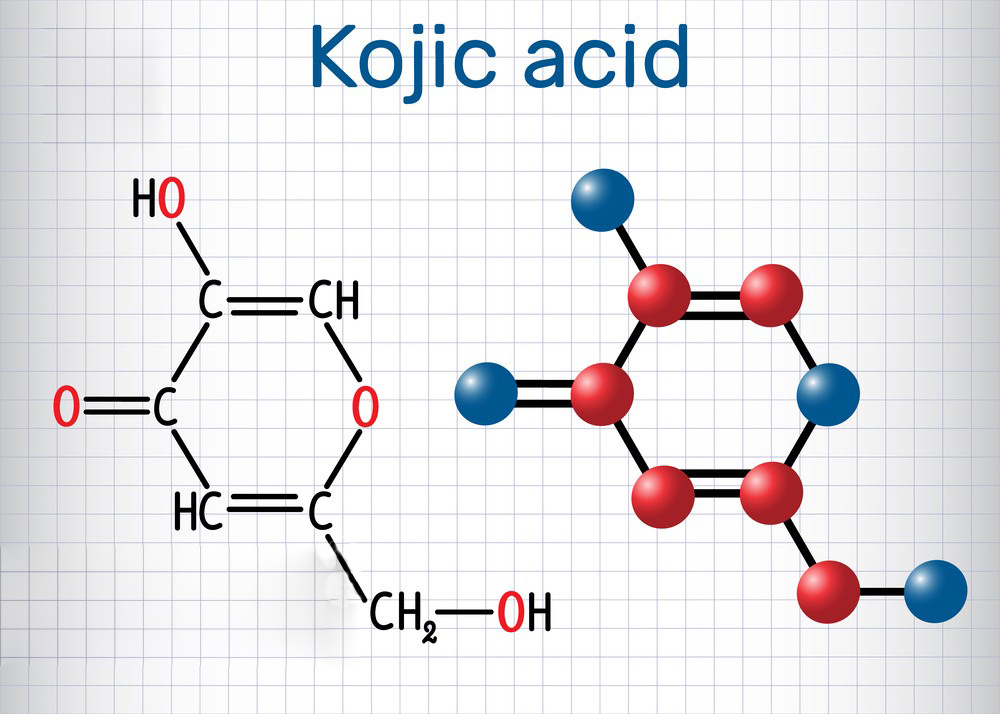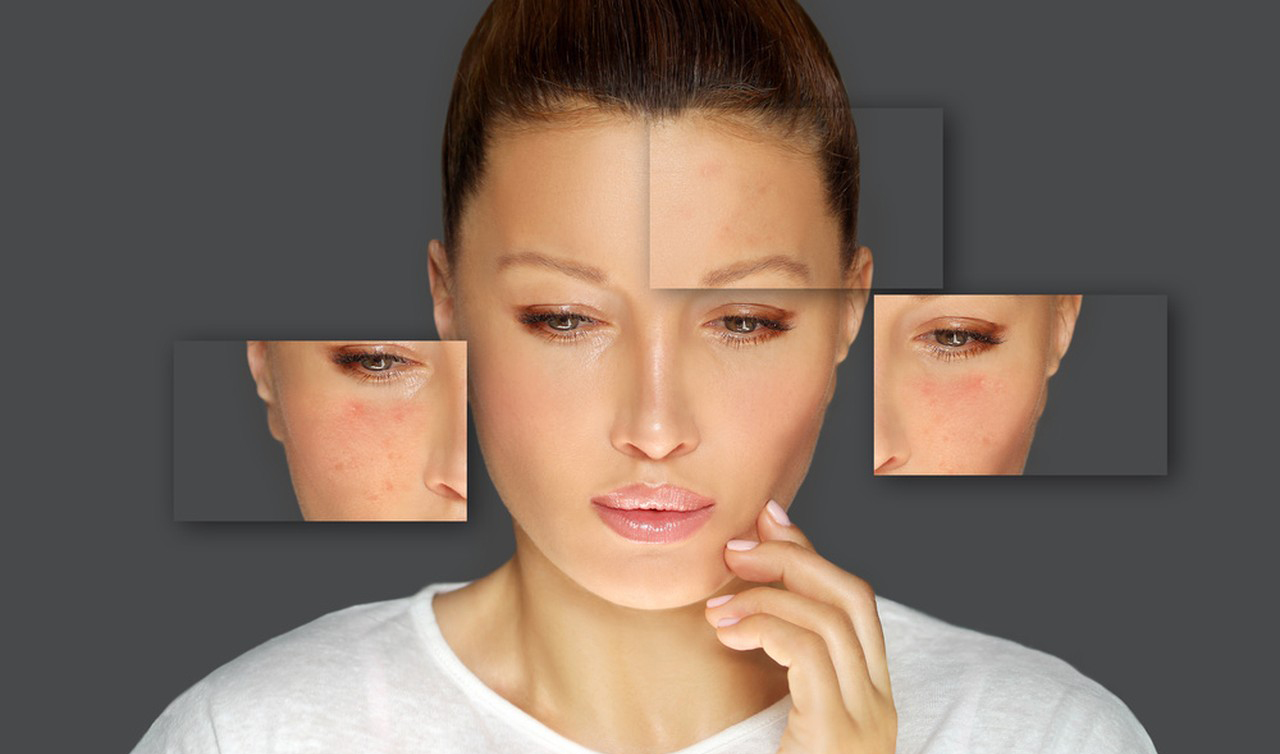Kojic acid is a naturally occurring organic compound that is often used in skincare and cosmetic products due to its skin-lightening and brightening properties. It is derived from various fungi, particularly Aspergillus oryzae, and is also found in some types of fermented foods, such as soy sauce and sake.
Kojic acid works as a skin-lightening agent by inhibiting the production of melanin, the pigment responsible for the color of our skin, hair, and eyes. It does this by interfering with an enzyme called tyrosinase, which is involved in the production of melanin. By inhibiting tyrosinase, kojic acid can help reduce the appearance of dark spots, age spots, melasma, and other forms of hyperpigmentation.
It’s important to note that while kojic acid can be effective in lightening skin, it may not work for everyone, and results can vary depending on factors like skin type and the specific product used. Additionally, some individuals may experience skin irritation or sensitivity when using products containing kojic acid, so it’s advisable to do a patch test before applying it to a larger area of skin.
Kojic acid is commonly found in various skincare products, including creams, serums, soaps, and lotions, where it is used as an active ingredient to target hyperpigmentation and promote a more even skin tone. It is often used in conjunction with other ingredients like sunscreen to protect the skin from further sun damage, as exposure to UV rays can exacerbate hyperpigmentation issues.
As with any skincare product, it’s essential to follow the instructions provided by the manufacturer and consult with a dermatologist or skincare professional if you have specific concerns about your skin or its sensitivity to kojic acid.

The basic ingredient of Kojic Acid
The basic ingredient of Kojic Acid is Kojic Acid itself. Kojic Acid is a naturally occurring organic compound that is commonly used in skin care products and cosmetics for its skin-lightening and brightening properties. It is derived from various fungi, most notably Aspergillus oryzae, which is often used in the fermentation of rice to produce Kojic Acid.
Kojic Acid works by inhibiting the production of melanin in the skin, making it effective in treating hyperpigmentation, dark spots, and uneven skin tone. It is often found in creams, serums, and other topical products designed to address these skin concerns. However, it’s important to use Kojic Acid-containing products as directed and with caution, as excessive or improper use can lead to skin irritation or other side effects. Consulting with a dermatologist or skincare professional before using products containing Kojic Acid is recommended, especially if you have sensitive or reactive skin.
The role of Kojic Acid in cosmetics
Kojic acid is a popular ingredient in cosmetics and skincare products due to its various beneficial properties, particularly in addressing skin concerns related to hyperpigmentation and uneven skin tone. Here are some key roles of kojic acid in cosmetics:
Skin Lightening: Kojic acid is known for its skin-lightening properties. It inhibits the production of melanin, the pigment responsible for skin color, by interfering with the activity of an enzyme called tyrosinase. This can help reduce the appearance of dark spots, age spots, melasma, and other forms of hyperpigmentation.
Treatment of Melasma and Sun Damage: Melasma is a common skin condition characterized by dark patches on the face, often triggered by sun exposure or hormonal changes. Kojic acid can be used as part of a skincare regimen to address melasma and fade sun-induced hyperpigmentation.
Brightening Effect: Regular use of products containing kojic acid can promote a brighter and more even skin tone. This can give the skin a youthful and radiant appearance.
Acne Scars and Blemishes: Kojic acid may also help in reducing the appearance of acne scars and blemishes. It can fade the dark marks left behind by acne breakouts, promoting a smoother complexion.
Anti-Aging Properties: In addition to its skin-lightening effects, kojic acid has antioxidant properties that can help combat free radical damage. This can contribute to its anti-aging benefits by reducing the formation of fine lines and wrinkles.
Safety and Mildness: Kojic acid is considered a milder alternative to other skin-lightening ingredients like hydroquinone, which may have side effects for some individuals. Kojic acid is generally well-tolerated by most skin types, making it suitable for a wide range of consumers.
Ingredient Synergy: Kojic acid is often used in combination with other skin-brightening and lightening ingredients, such as glycolic acid, lactic acid, and vitamin C, to enhance its effectiveness.

It’s important to note that while kojic acid can be effective in addressing hyperpigmentation and other skin concerns, it should be used as part of a comprehensive skincare routine and with appropriate sun protection. Overuse or improper application of kojic acid products can lead to skin irritation and may not be suitable for individuals with sensitive skin. It’s advisable to consult with a dermatologist or skincare professional before incorporating products containing kojic acid into your skincare regimen.
